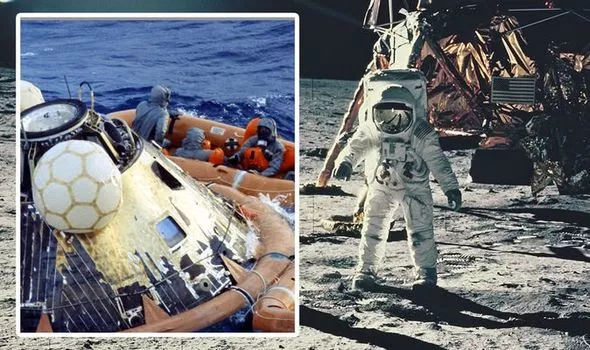Scientists have sent NASA an urgent warning, stating that if the space agency continues with its current plans, they could “destroy” the Moon.
The Texas-based corporation Celestis launched an expedition project earlier this week with the goal of building a “permanent memorial” in space.
On January 8 at 2.18 am, the rocket launched its dramatic departure from Earth, carrying 1/4 and 1/2 inch titanium capsules containing the cremated remains and DNA samples.
READ MORE: NASA Spacecraft Is Scheduled To Make A Solar “Landing” Attempt
Sixty-two of the 330 sets of remains that the spaceship carried were dropped on the Moon.

These have been reduced to a device known as the Peregrine lunar lander, which is eight feet broad and six feet tall.
The remaining 268 capsules will then be sent into space and continue their orbit around the Sun.
Additionally, the “permanent memorial” connects well with the Astrobotic mission—which is a totally distinct objective.
The Peregrine lander of Pittsburgh-based Astrobotic is currently experiencing a fuel leak, which is making it challenging to keep the spacecraft pointed steadily.
The company has stated that as a result, mission life could now be calculated in a matter of hours.

According to Astrobotic, “At this time the goal is to get Peregrine as close to lunar distance as we can before it loses the ability to maintain its Sun-pointing position and subsequently loses power.”
NASA and astronomers have now been alerted to the potential long-term consequences of using the Moon’s resources, even if they were initially quite enthusiastic about the Astrobotic and “permanent memorial” missions.
According to Martin Elvis of the Harvard & Smithsonian Center for Astrophysics, “the issue has become urgent,” as he stated to the Observer.
READ MORE: NASA Introduces NASA+, A New Free Streaming Service
He continued: “We need to act now because decisions made today will set the tone for our future behaviour on the moon.”

Concerns have been raised by astronomers that the unbridled rush to use the Moon would permanently destroy important scientific locations, such craters.
Similar opinions were expressed by University of Arizona astronomer professor Richard Green, who stated: “We are not attempting to prevent the construction of lunar bases.
Only a few promising locations exist there, though, and some of them are extremely valuable from a scientific standpoint.
“Wherever we build our bases and mines, we need to exercise extreme caution.”
He continued: “The trouble is that it takes a long time to make changes to UN treaties, so we have to act now if we are to have a hope of making sure we have international agreements in place to protect the unique scientific features of the moon and ensure they are not destroyed through thoughtless exploitation.”
Radiant and America Nu, offering to elevate your entertainment game! Movies, TV series, exclusive interviews, music, and more—download now on various devices, including iPhones, Androids, smart TVs, Apple TV, Fire Stick, and more.



